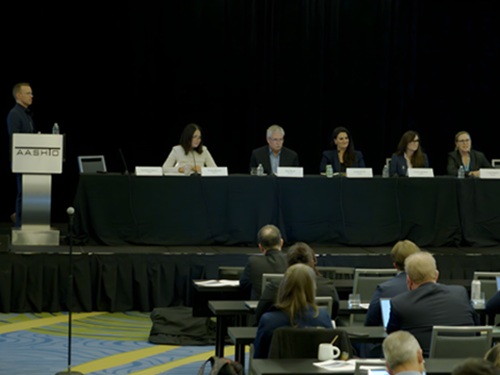Executives with Amtrak outlined some of the national passenger rail provider’s plans during a panel discussion January 29 at the American Association of State Highway and Transportation Officials Council on Rail Transportation’s Winter Legislative Meeting in Arlington, VA.
[Above photo by AASHTO]
But before they discussed 2025, Nicole Bucich – Amtrak’s VP for network development – stressed the need to talk about Amtrak’s 2024 successes.
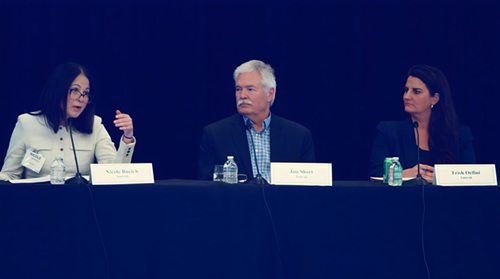
“We are coming off just a tremendous year,” she pointed out. “We achieved record ridership – 32.8 million riders, up 15 percent year over year – and record revenues, up 9 percent year over year to $2.5 billion. We also advanced critical infrastructure projects – bridges and tunnels – and planned more AIRO equipment acquisitions. So, I think it is important to think of 2024 as our pivot point – and that you will see more of this in 2025.”
Celia Pfleckl, Amtrak’s assistant VP for major programs-AIRO, added that the first new AIRO train set should be delivered in September this year.
Additionally, Bucich said the launch of Gulf Coast passenger rail service will be a major highlight of 2025 as will Amtrak’s work to help develop projects tied to the new Corridor ID program.
“As Corridor ID grantees enter into the project delivery phase, we have to remember this is still an early stage, proof of concept effort; it is still hard to think of the end game at this point,” she said. “Procuring new equipment and building facilities requires the longest lead time in these corridors, so that has to become more than a conversation.”
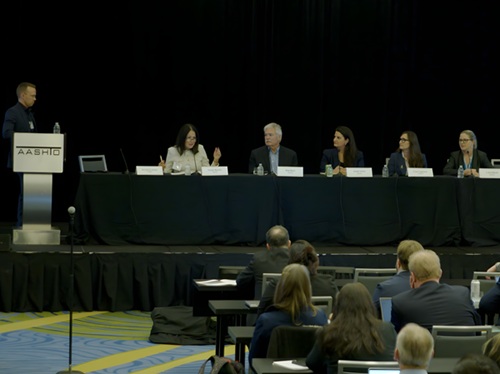
Jim Short, VP for project development and planning services, noted that the biggest challenge with Amtrak’s 2025 infrastructure plan is that because there is “so much to do and so much planning required” that “just getting started” is the biggest hurdle.
“There are a lot of things that need to happen,” he added. “In 2024 we put the foundational elements in place. Now for 2025 we plan to double spending to strengthen the system. We are looking to put more projects on the street in 2025; several billion worth. While I cannot talk specifics due to procurement rules, it means 2025 is going to be another big year. But it also means execution will be key: we need to be on budget and on schedule; that is how we will build confidence with stakeholders.”
Trish Orfini, assistant VP for product development and customer experience, added that it is important to keep in mind that “post-COVID” expectations have changed among passenger rail customers – and that new equipment alone is not enough to help those new expectations.
“We are focused on giving our staff the tools they need so they can give customers more accurate information,” she said. “Front line staff represent our brand; they talk to customers every day at every point of their trip. That’s why we’re now focused on going digital, so we ensure that they have information when they need it. There is no reason we can’t throw away paper and adopt digital.”
Lisa Copeland, assistant VP for loyalty and customer engagement, added that Amtrak’s record ridership in 2024 means that “the demand is there and that gives us an opportunity to meet customers with great service.”
Her focus in 2025 will be on trying to make Amtrak’s customer experience not only more consistent but more personalized as well.
“And we want to drive that ‘personalization’ at scale,” Copeland said. “Our big priority is to be more connected to customers and more consistent in our communication with them. And we will be working with our state partners to do that.”
She added that she is “really optimistic” when it comes to Amtrak’s state partnerships and relationships in this area. “We are building a joint vision to connect more people and places – and there is a lot of room for states and Amtrak to come together in that decision-making. We can share best practices, leverage the experience of our state partners, and share more data. All of that will help us create ‘win-wins’ together.”
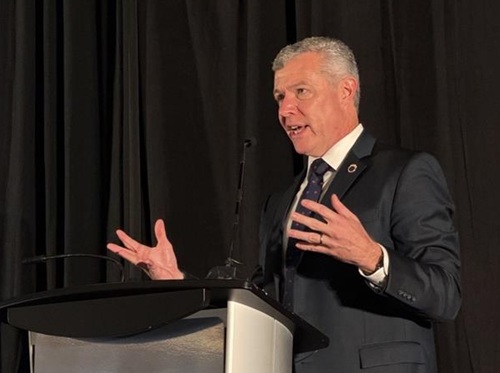 Top Stories
Top Stories
Collaboration Touted at AASHTO’s Third Safety Summit
October 31, 2025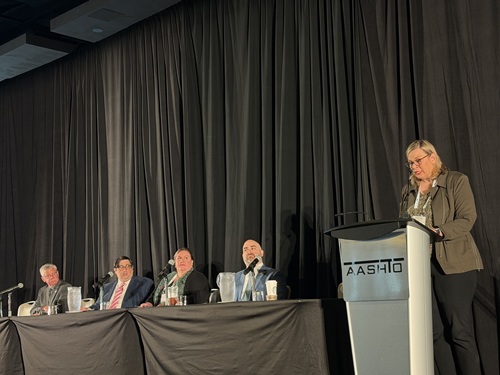 Top Stories
Top Stories
